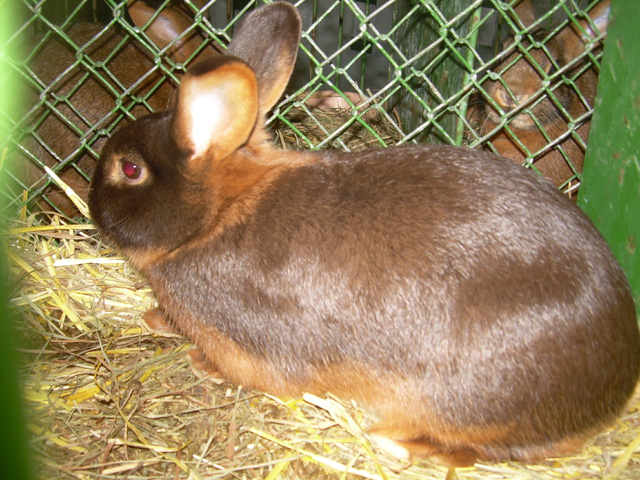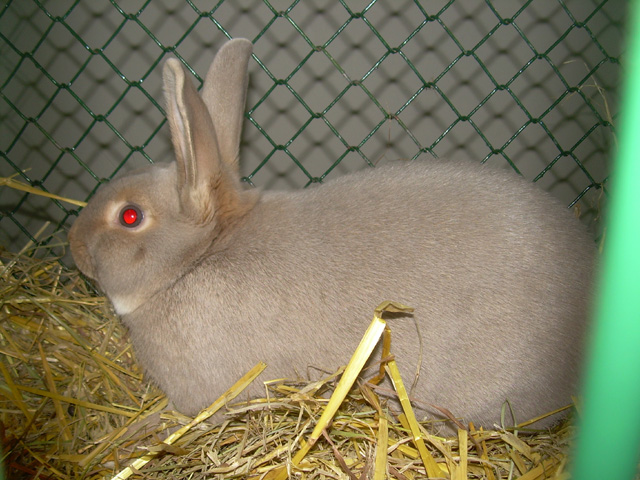
Timelines 10
Man and his Senses 10
Man and his Inventions 10
Geography 10
Fauna 10
Timelines 10
Man and his Senses 10
Man and his Inventions 10
Geography 10
Fauna 10

Rabbits are small animals with large social footprints. Across the temperate regions of Central Europe and the vast, ecologically varied subcontinent of South Asia, the same species has been folded into different economies, rituals and policies: one set of practices emphasises breed standards and husbandry; the other balances welfare concerns with the promise of rapid, small-scale rural enterprise. The comparison tells us less about rabbits than about how human societies choose to use, celebrate or protect other living beings.
In the Czech Republic the story is often a matter of names and standards. The Czech Red (Český červený králík) is a recognised domestic breed, officially acknowledged in the mid-twentieth century and selected earlier in the century from local stock. This breed is a medium-weight rabbit (about 2.5–3.2 kg), with a gray or red-brown colouration, and body types distinguished by sex. Small registries of officially registered animals attest to a measured, craft-like approach to domestic rabbit breeding in which standardisation and lineage matter to breeders and hobbyists alike.
That registry culture supports practical husbandry. Where breeds are named and standards written, breeders organise, exchange stock and preserve lines; such practices are as much about their social continuity as about meat or fur. The Czech example is typical of a European pattern in which rabbits are simultaneously livestock, easter display animals and companions. Breed recognition makes possible competitions, selective improvement and the informal economies of markets and local fairs, creating a texture of local agricultural life that keeps small-animal husbandry visible in rural and peri-urban communities.
The Czech focus on breed identity also implies a set of technical practices: selection for body shape, controlled mating, record-keeping and small-scale husbandry systems tuned to local climates and feed. These practices produce animals that fit market or hobby niches, and they anchor a network of breeders who value the continuity of lineage. The result is not only a catalogue of forms but an embedded craft of rearing, showing and exchanging animals that is culturally recognisable in many Central European communities.
Shift the map to India and the tone changes. Here rabbits occupy multiple roles: sometimes as livestock commodity, sometimes as companions, and often objects in ethical debate. Indian accounts of rabbit rearing emphasise both economic opportunity and welfare risk: promotions of rabbit farming as a small-scale income activity sit uneasily alongside reports documenting poor conditions in some institutional and commercial farms. The narrative in India is therefore two-toned: rabbits are offered to rural households as a potential source of meat, wool or manure, even as welfare advocates warn of the real animal-care challenges posed by rapid intensification.
Government agencies and research bodies in India have promoted rabbit farming as a tool for rural development. Experimental and extension projects have introduced broiler and wool breeds to climatically suitable regions, with national and state agencies testing husbandry packages and training programmes. These interventions rest on a practical logic: rabbits multiply quickly, require relatively small space, and, under certain feed regimes, can produce meat or Angora fibre with modest inputs of capital. For policy makers and some rural entrepreneurs, rabbits therefore present a compact route to income diversification.
But promotional enthusiasm collides with welfare realities. Reports document overcrowding, poor hygiene and management failures on some institutional farms, and recount stories of schemes where promised buy-back arrangements or market outlets did not materialise. The practical lesson is blunt: biological potential alone does not guarantee humane or sustainable practice; success depends on animal health protocols, market linkages and realistic extension support. Those institutional lessons have shaped how activists and practitioners speak about rabbits in India, not only as a rural technology but as a responsibility.
Economics and markets are a further axis. There is an expanding global market for rabbit farming: demand for rabbit meat and fibre is driven by both niche gastronomy and specialized industrial uses, and projections suggest growth in breeding and processing segments. These broad signals underpin private interests and entrepreneurial projects in India, where market information is used to justify investments in small-scale rabbit enterprises. Yet the market case remains dependent on infrastructure: slaughter and cold chains for meat, processing facilities for fibre, and credible farmer support.
Cultural meaning adds a final, contrasting layer. Their connection with Easter in the Czech Republic and in many Hindu traditions, rabbits appear in popular devotional contexts and iconography in varied ways. While rabbits are not universally central in the religious imagination the way the cow or the peepal tree can be, they do appear in stories and ritual contexts that shape local attitudes toward animals. Those cultural registers—pity, playfulness, auspiciousness—influence how people relate to rabbits as pets, as farm stock or as evocative creatures in children’s lore.
What ties the Czech and Indian narratives together is not a single model but a shared set of practical questions: how to rear animals humanely, how to connect producers to markets, and how cultural frames shape acceptable uses. In Czech contexts the answer has leaned toward formal breed recognition, small-scale husbandry and a civic culture of shows and registries. In India the focus is mixed, with development agencies, research institutes and welfare groups debating whether rabbits belong in rural livelihood strategies and under what terms. Both continents, in short, are negotiating the ethics and economics of a small mammal with many possible futures.
If policy is to succeed it must be technical and humane. For Czech breeders the set of practices is record-keeping, veterinary care and selective breeding; for Indian projects it must add robust extension services, reliable market channels and animal welfare safeguards. The alternative is precarious: poorly designed schemes can produce animal suffering and disappointed farmers, while carefully executed programmes can create a modest, distributed income base for households across diverse rural ecologies.
In the end the rabbit is a small mirror held up to larger questions: how societies order animal work, how they balance utility with compassion, and how local histories shape practical choices. Whether in a Czech hutch kept for a recognized national breed or in an Indian homestead testing a new small-enterprise model, the same decisions recur: about care, about markets, and about what it means to keep another life under one’s stewardship. The humane and pragmatic path is the same everywhere: match ambition to capacity, and let both economy and ethics guide the keeping of animals.
Sources:
https://tinyurl.com/2cfnlkp3
https://tinyurl.com/2cfnlkp3
https://tinyurl.com/25km6w3v
https://tinyurl.com/2dxnb7av
https://tinyurl.com/2d6b2bsg
https://tinyurl.com/287o7ecf
https://tinyurl.com/2xsltymz
https://tinyurl.com/2abfp78b